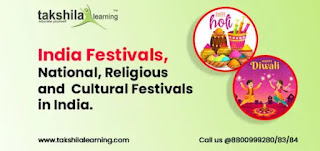What are national and religious festivals in India?
A national holiday is one that the entire nation observes. It relates to an official holiday and is acknowledged as a law by the federal government. There are just three national holidays in India, a nation with rich cultural diversity, and these are Republic Day (26 January), Independence Day (15 August), and Gandhi Jayanti (2 October). States have regional festivals that are based on traditional religious and linguistic demography. We observe national holidays to recognise the significance of the nation's historical occurrences and to honour the efforts and accomplishments of various freedom fighters and great leaders.
The countrymen come together more than ever during national festivities, putting their differences aside. Numerous national festivals are held in New Delhi, the capital of India. One such event is the Republic Day big parade. The raising of the flag takes place in New Delhi and is televised for global viewing on the national network.
A religious festival is a time period that is significant to the followers of that religion. Religious holidays are typically observed in reoccurring cycles, either on a solar or lunar calendar.
Diwali, Holi, Durga Puja, Navaratri, Raksha Bandhan, Eid, Christmas, etc. are just a few of the religious celebrations celebrated in India. Diwali is the most well-known and popular celebration in the country among them.
Religious holidays are observed not just in one region of the country but also around the globe. Some of the most well-known religious holidays are Diwali, Eid ul-Fitr, Christmas, Guru Nanak Jayanti, Holi, and many others. According to the Hindu calendar, Diwali and Holi are the most well-known holidays.
Read more about Indian festivals

Comments
Post a Comment
Thank you we will contact ASAP.